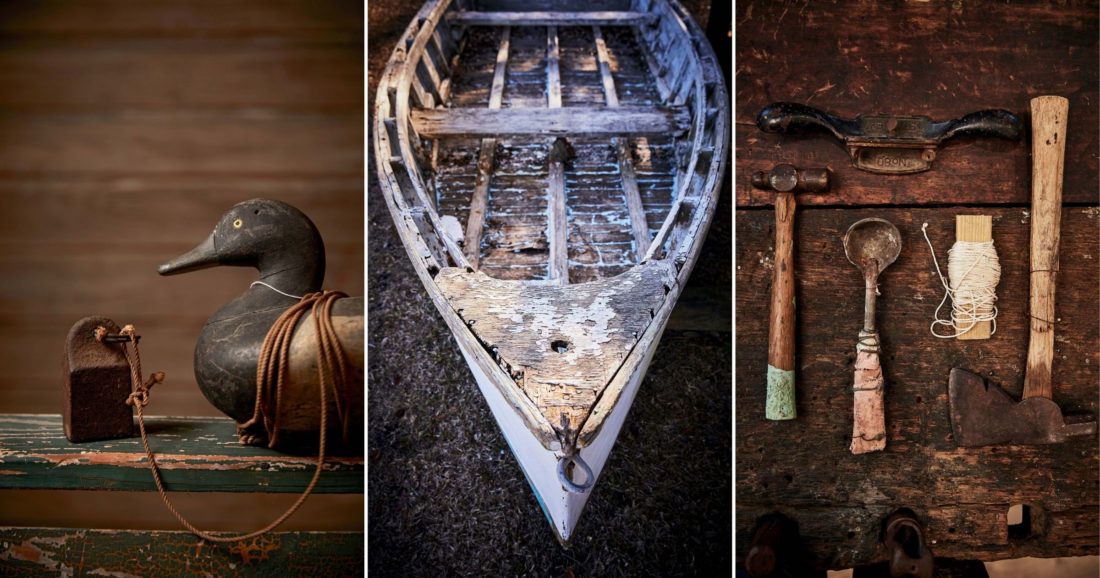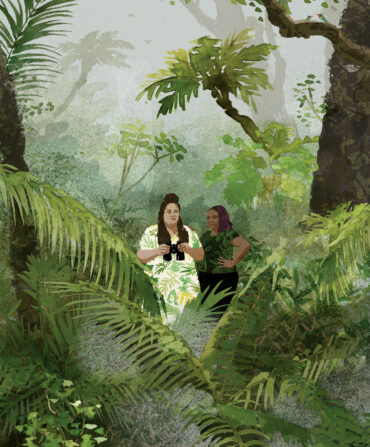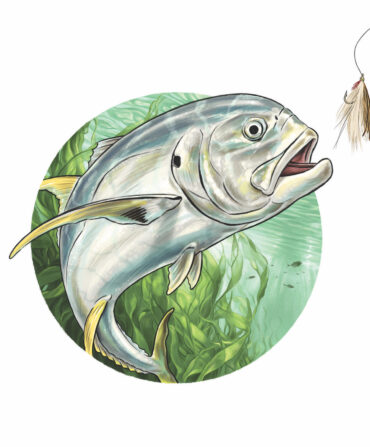It’s a curious item to cause a stir, amid the canvas paintings, the boat models, and the astonishing collection of antique and contemporary hand-carved decoys from the Core Sound region of Eastern North Carolina. But causing a little stir is what Joel Hancock’s great-great-great-grandfather’s whale harpoons are doing. Hancock, a retired insurance executive, and his wife, Susan, crowd around a table with Karen Amspacher, director of the Core Sound Waterfowl Museum & Heritage Center, and Pam Morris, the museum’s collections manager, as Hancock hands over a pair of forged-iron harpoon spikes, pitted with age.
The soaring twenty-thousand-square-foot museum on the “east’ard end” of Harkers Island, as locals would say, is a home-away-from-the-workshop for local and visiting decoy carvers. Through the spring and summer, guests from the nearby Crystal Coast beaches head for the regional landmark, including many hunters who need a summer fix of duck calls and gunning lore. But more so than most, perhaps, this museum is as rooted in present-day community as it is in history and heritage. And that deep relationship with residents is what led Hancock here today, to donate his family heirlooms to the museum.
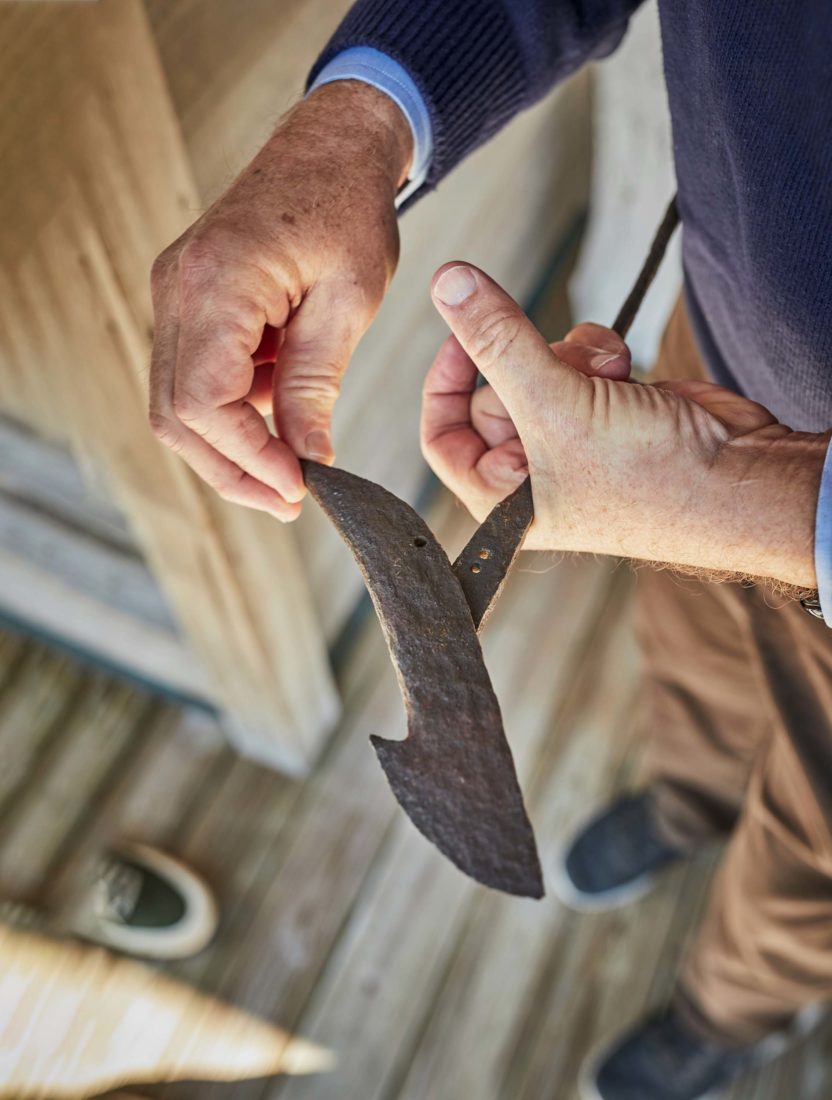
For centuries, Hancock explains, the shore-based whalers in North Carolina’s Cape Lookout region met migrating right whales that coursed north along Shackleford Banks, the southernmost barrier island in what is now Cape Lookout National Seashore, just offshore of Harkers Island. They would watch from the highest dunes, their wooden dories on the beach, harpoons readied. Before the advent of oil wells and plastics, whale products were a surprisingly ubiquitous item. Whale oil fired the lamps of cities and towns, and blazed from the cupolas of lighthouses. The flexible filter-like baleen inside a whale’s mouth was used in industrial-age products from buggy whips to parasols. In a typical year, perhaps four whales might be brought to the Cape Lookout beaches, with the value of oil and whalebone from a single right whale ranging from $1,200 to $1,500.
“You have to wonder if one of these was ever really used on a whale,” says Hancock, holding one of the harpoons. It’s likely they were. His ancestor and the original owner of them, Billy Hancock, was one of the best known of the old Shackleford Banks whalers.
Next to him, Morris holds the other harpoon, swinging a large barb in and out of its recess in the two-foot-long forged tip. “I’ve seen photos, reproductions, and models of old whaling harpoons from the Banks,” she says, “but I’ve never held the real thing.”
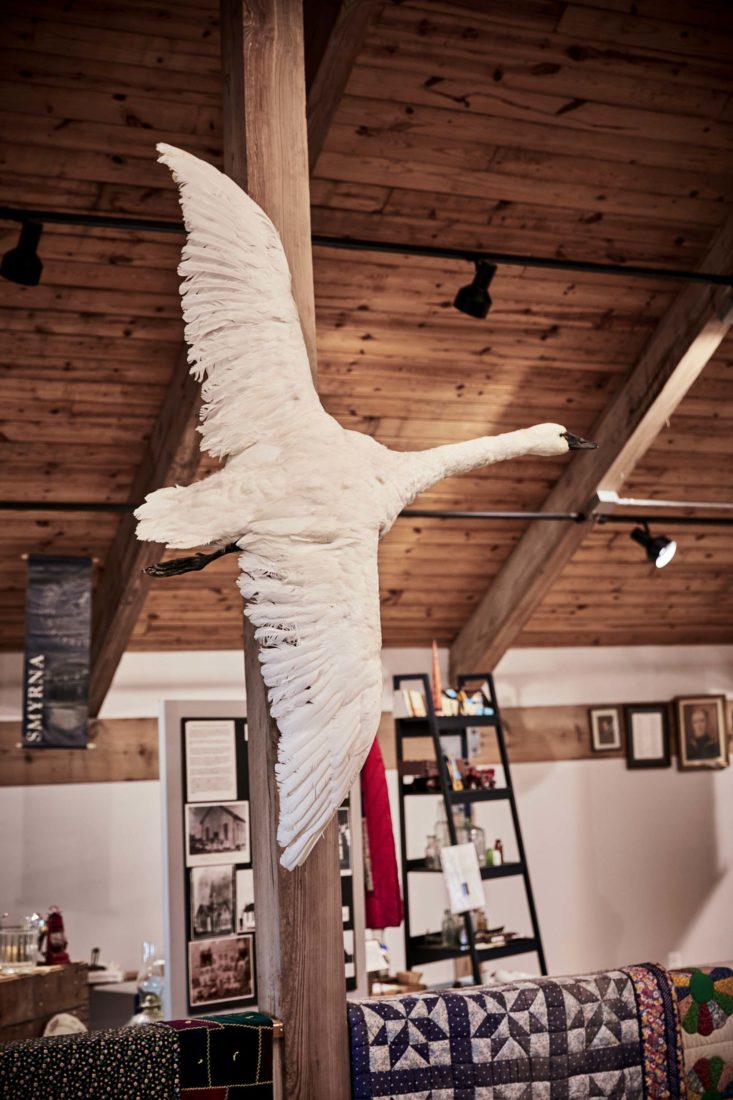
She is quiet for a moment. “It makes me wonder what folks back then thought of as valuable,” she ponders. “Did they worry about passing along their traditions like we do today? And how did they share their own stories about the changes in their communities?” Those are weighty questions for a piece of corroded iron to bring to the surface, but Morris might be forgiven a moment of heavy introspection. In 1899, a series of devastating hurricanes nearly wiped the whaling communities of Cape Lookout off the map. Hancock’s ancestors, and Amspacher’s too, fled the barrier islands forever. For those who live on Harkers Island and in the twelve other small communities in the Down East region, any touchstone to the life-altering power of a hurricane sets off a deeply personal chord.
When Hurricane Florence roared ashore in the Carolinas in September 2018, the museum was in the storm’s northwest-quadrant crosshairs. The hurricane dumped twenty to thirty inches of rain on the region, with wind gusts of 106 miles per hour at nearby Cape Lookout. It was the staying power of the storm, however, that proved so devastating. Hurricane-force winds raked the museum for more than sixteen straight hours. Torrential rain fell for thirty-six.
The museum roof held for half the storm, recalls Amspacher, but that wasn’t enough. “When the rain came,” she says, “it went everywhere. Down the walls, inside the walls, through the walls, you name it.” The entire structure had to be gutted. While an insurance policy covered the packing up and storage of the museum’s decoys, fine art, and other irreplaceable exhibits, volunteers, partnering museums, and staff packed the rest—books, quilts, boat models, gift shop inventory, and computers—into five hundred donated fish boxes for what would be a nearly two-year hiatus in storage.
Today, after a $3 million rebuild, the museum is resplendent, a phoenix rising from sodden drywall. And while two-thirds of the main floor is dedicated to the region’s rich decoy-carving and duck-hunting history, the museum has always been about more than the ducks. The structure’s second floor holds community exhibits that use donated items—family photos, quilts, tools, and boat models—to tell the stories of the thirteen small Down East settlements such as Stacy, Marshallberg, Davis, and Cedar Island. Residents use the building itself for events ranging from family reunions to public meetings to funeral-planning seminars. “The museum is a means to an end,” Amspacher says. “It’s not what’s inside this building that matters as much as what goes on out there, in the community, that is rooted in this building.”

Hancock’s harpoons are a good example of that synergy: a family heirloom from one of the region’s oldest families, but also an artifact that points the way toward recognizing that saving history in the present will have to mean something other than how it was preserved in the past.
“I learned about the old Banks whalers not because I went to a class, but because the old folks on Harkers Island talked about them down at the store,” Hancock explains. “Younger generations don’t go to work with their daddies at the net house anymore. They don’t go hang out at the old store. A museum has to be intentional and purposeful to hand down this history that was given to us without anyone even thinking about it.”
How to hold fast to the past without ignoring the future is a lesson Down East residents have learned the hard way, and one that Amspacher and others are committed to keeping front and center now that Hurricane Florence itself is a memory. While the museum’s duck calls and workboats are the main draw, a soaring new exhibit explores sea level rise in a deep, community-oriented, personal way: Living on the Edge. It uses oral history, newspaper clippings, a survey of residents, scientific research, and interviews to explore how locals are holding on to their changing world and adapting to a future where the tides will rise ever closer.
Installing the exhibit marked a leap of faith in her community, Amspacher says. “To say that sea level rise is a contentious issue here is an understatement,” she explains. “But everybody here has a hard story to tell about Florence, and that opens the door to a lot of other questions. Before that storm, I wouldn’t have been brave enough to put this exhibit up. But we don’t live in that world anymore. What good is all this stuff if we don’t learn something from the past that leads us forward?”


